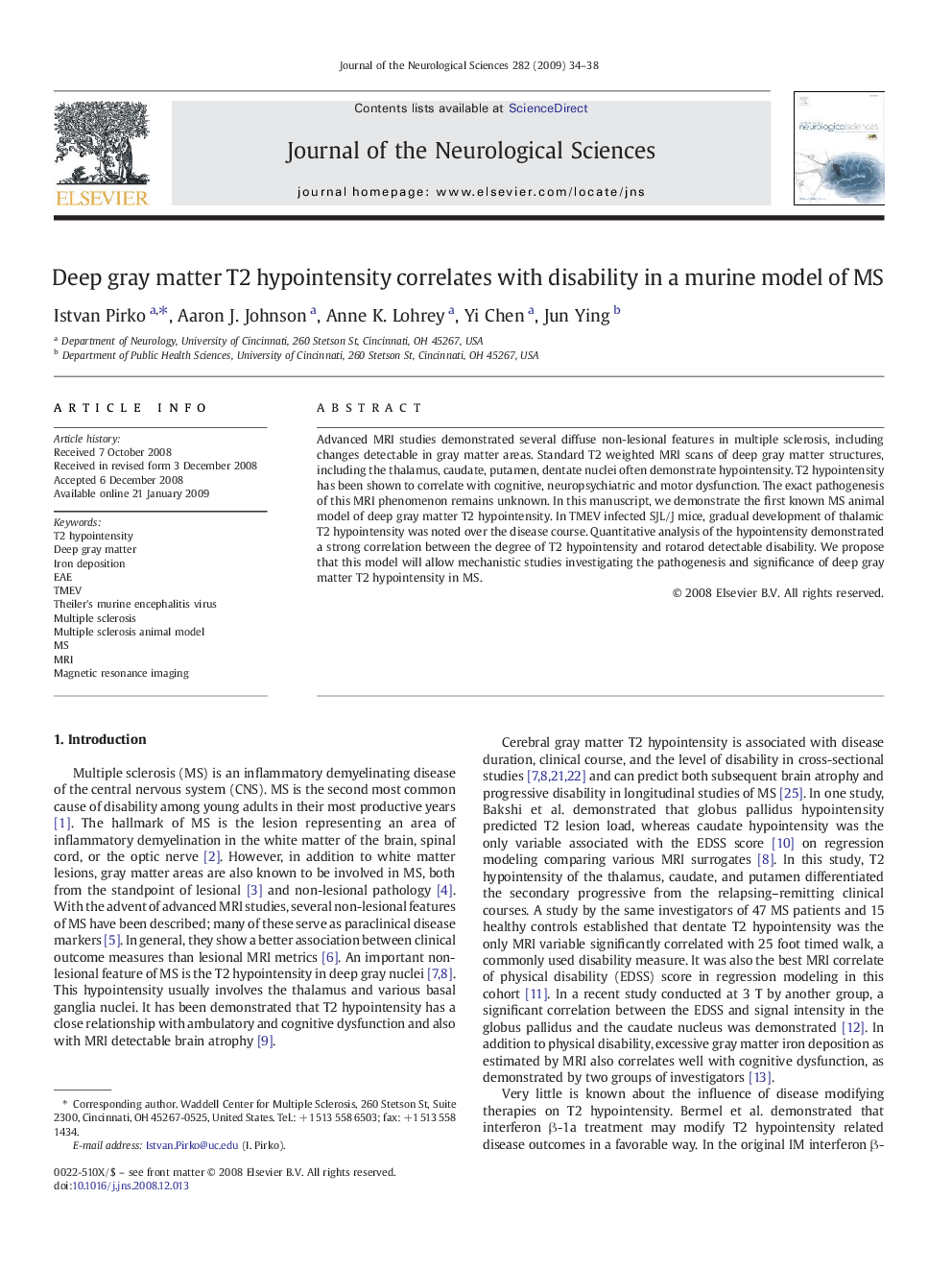| Article ID | Journal | Published Year | Pages | File Type |
|---|---|---|---|---|
| 1915084 | Journal of the Neurological Sciences | 2009 | 5 Pages |
Advanced MRI studies demonstrated several diffuse non-lesional features in multiple sclerosis, including changes detectable in gray matter areas. Standard T2 weighted MRI scans of deep gray matter structures, including the thalamus, caudate, putamen, dentate nuclei often demonstrate hypointensity. T2 hypointensity has been shown to correlate with cognitive, neuropsychiatric and motor dysfunction. The exact pathogenesis of this MRI phenomenon remains unknown. In this manuscript, we demonstrate the first known MS animal model of deep gray matter T2 hypointensity. In TMEV infected SJL/J mice, gradual development of thalamic T2 hypointensity was noted over the disease course. Quantitative analysis of the hypointensity demonstrated a strong correlation between the degree of T2 hypointensity and rotarod detectable disability. We propose that this model will allow mechanistic studies investigating the pathogenesis and significance of deep gray matter T2 hypointensity in MS.
